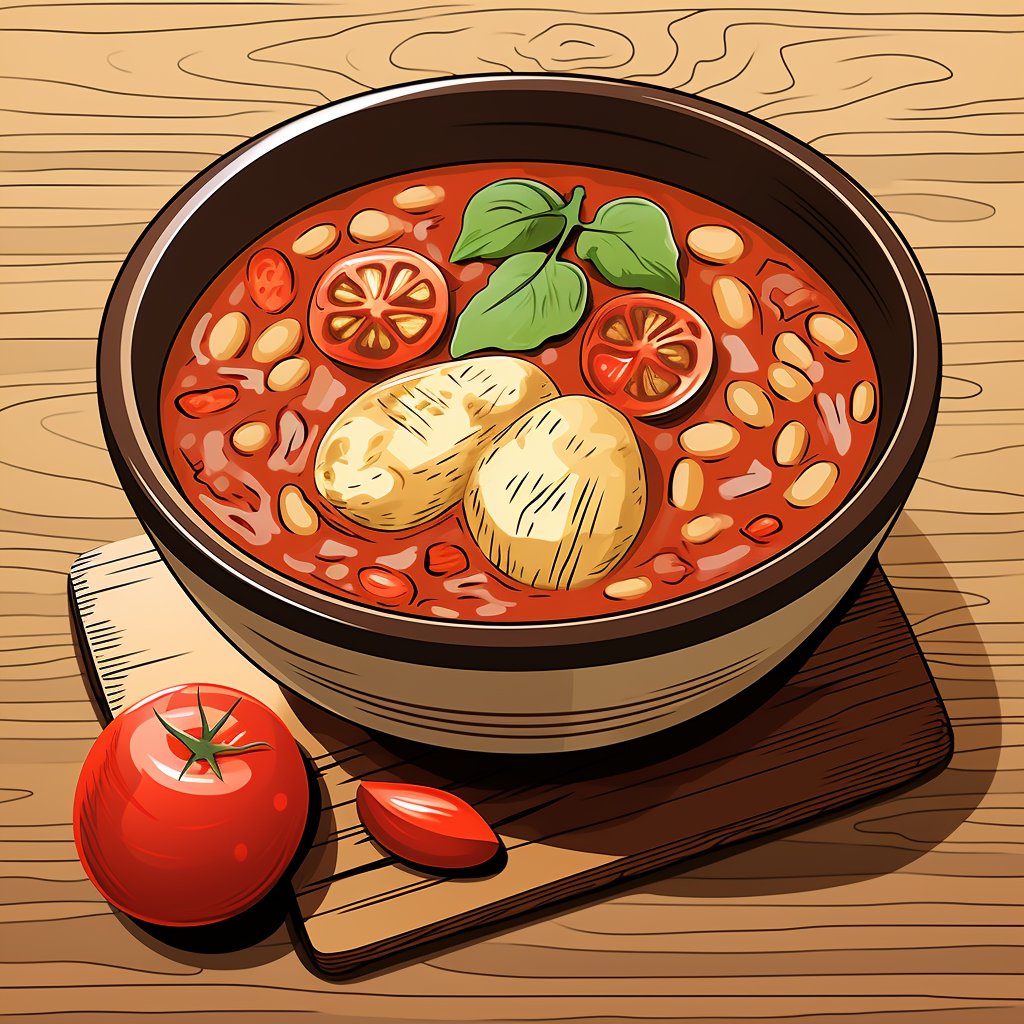Kikomando, an enticing beans dish popular in Ugandan cuisine, is a delightful blend of beans, tomatoes, and onions. The dish’s name, often associated with a chapati-beans combo, has its roots in street food culture, offering both nutrition and exceptional taste.
Kikomando’s Street Food Legacy
Originating from the bustling streets and local eateries of Uganda, Kikomando has evolved from a quick meal option for the on-the-go individual to a beloved dish enjoyed nationwide.
Essential Ingredients and Customizations
- Beans (Kidney or any variety) – 2 cups, soaked overnight
- Tomatoes – 4, diced
- Onions – 2, finely chopped
- Garlic cloves – 3, minced
- Salt – to taste
- Chili pepper – 1, chopped (optional)
- Oil – 2 tablespoons
- Water – 4 cups
Customizations:
– Fresh herbs like cilantro can be sprinkled on top for added aroma.
– For a twist, bell peppers or corn can be added.
Preparation Guidelines and Tricks
- Base Preparation: In a pot, heat oil and sauté onions and garlic until fragrant. Add tomatoes and chili pepper, cooking until the tomatoes soften.
- Bean Cook: Add the soaked beans to the pot. Pour water, ensuring the beans are covered. Bring to a boil, then simmer until the beans are tender.
- Season & Relish: Once the beans are cooked, season with salt. Serve hot with chapati or rice.
Tricks:
– Using a pressure cooker can significantly reduce the beans’ cooking time.
– Ensure you soak the beans overnight for quicker and even cooking.

Concluding Notes
Kikomando, with its comforting and earthy flavors, captures the essence of Ugandan street food culture. Whether you’re enjoying it on a busy street corner or in the comfort of your home, this dish promises a burst of flavors with every bite.
Frequently Asked Questions (FAQs)
Why is it called Kikomando?
The term ‘Kikomando’ originally referred to a combination of chapati cut into pieces and mixed with beans. Over time, it became synonymous with this beans dish, especially in street food contexts.
How can I make my Kikomando more flavorful?
Enhancing the dish with additional spices like cumin, paprika, and turmeric can boost its flavor. Fresh herbs like cilantro or parsley, added before serving, can also elevate the taste.
Is Kikomando considered a main dish or a side?
Kikomando can serve as both a main dish or a side. Due to its hearty nature, many consume it as a standalone meal, especially as street food. However, it can also accompany other dishes if desired.
Can I add other vegetables to Kikomando?
Yes, you can tailor Kikomando to your liking. Ingredients like bell peppers, carrots, and corn can be added for additional texture and flavor.
Celebrate the heritage with more Traditional Ugandan Meals. Dive into our main page for a banquet of choices.
